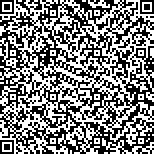下载中心
优秀审稿专家
优秀论文
相关链接
摘要

针对传统Gamma混合模型用于SAR图像分割时忽略像素间空间相关性,导致分割结果不连续并产生大量误分割的现象,提出了区域Gamma混合模型的SAR图像分割算法。首先对图像进行分水岭分割,得到过分割区域块,然后将其作为输入样本进行基于Gamma混合模型的聚类,在模型的参数估计过程中进一步考虑区域间的空间相关性,设计邻域因子融入到迭代过程,得到邻域加权类分布概率。该算法充分利用像素间的空间相关性,能够降低噪声对分割结果的影响。通过合成图像和真实SAR图像的实验表明,本文算法能够实现SAR图像的准确分割。
The application of gamma mixture model on Synthetic Aperture Radar (SAR) image segmentation ignores spatial correlation between pixels. To solve this problem, this study proposes a new algorithm using regional gamma mixture model, which improves segmentation accuracy and reduces speckle noise effects on SAR images. The special imaging mechanism of SAR images results in severe distractions to speckle noise. The traditional gamma mixture model for SAR image segmentation only uses the gray information of images and ignores the spatial correlation between pixels, leading to segmentation result discontinuity and false segmentation. Watershed segmentation is a common initial segmentation algorithm. The defect of this algorithm is the over-segmentation phenomenon, which becomes more serious as the noise increases. Segmentation results cannot accurately represent the ground object features. Therefore, related algorithms should be used to combine segmentation results. A substantial amount of research has been conducted to solve the above problems. This study proposes a new segmentation algorithm that increases both segmentation accuracy and noise immunity. This algorithm involves two main steps: building of a regional gamma mixture model and designing of a neighborhood factor. SAR images are segmented by the watershed algorithm. The over-segmented results are used as initial clustering objects for the gamma mixture model. However, the watershed algorithm has a serious problem of over-segmentation. The watershed algorithm and gamma mixture model are combined to include regional information into calculation; however, inter-regional linkages remain missing, and segmentation accuracy remains poor. Therefore, considering the correlation between regional blocks in the parameter estimation, we include the neighborhood factor into the expectation-maximization iterative algorithm. The neighborhood factor is the weighted probability of each region belongs to each segmentation class. After several iterations, the factor is updated, and the image is segmented. Synthetic images and real SAR images demonstrate that the new algorithm can achieve more accurate segmentation results than the traditional gamma mixture model, regional Gaussian mixture model and regional Markov random field algorithm. Upon visual observation, the segmentation results of the new algorithm are clearer and less affected by noise. Moreover, the results of the new algorithm have larger Kappa coefficient and better segmentation accuracy. This study proposes the RGaMM algorithm, which includes regional information and interregional contextual information into calculation. This algorithm can also effectively segment SAR image. In particular, under the effects of heavy speckle noise, the RGaMM algorithm has more advantages than the traditional algorithm. The proposed algorithm not only can achieve accurate segmentation on SAR images, but also reduce speckle noise effects.

